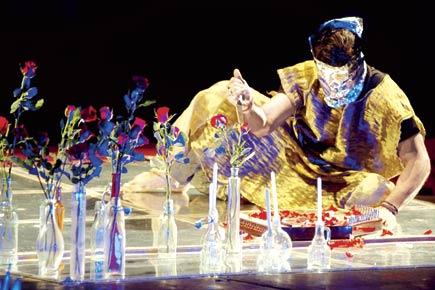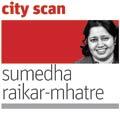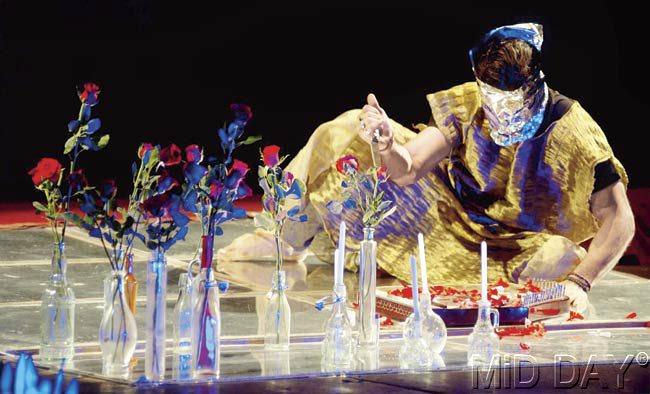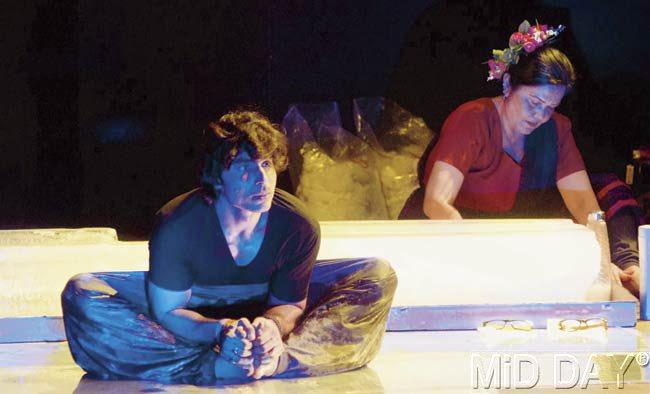On World Theatre Day today, looking at Mumbai’s theatre scene through the prism of director Neelam Mansingh Chowdhry’s Punjabi reincarnation of a Shakespearean drama

 It was a tale worth listening to, a patchwork worth visiting. A Punjabi tale sculpted out of an African-American writer’s response to Shakespeare’s Othello.
It was a tale worth listening to, a patchwork worth visiting. A Punjabi tale sculpted out of an African-American writer’s response to Shakespeare’s Othello.
A cross-continental confluence of texts, languages, cultures, people and sensibilities unfolded at Mumbai’s Experimental Theatre (NCPA) when Chandigarh-based theatre director Neelam Mansingh Chowdhry presented a Punjabi reincarnation of a Shakespearean drama.
ADVERTISEMENT
Desdemona was Bihaag, Othello was Udav; and the African nurse Barbary was Dasso. Their meeting point was a graveyard - a cozy place to sort out issues after death. They spoke in Punjabi - before a distinctly non-Punjabi audience - and conveyed their tale of loss, pain, dislocation and ultimate acceptance of fate.
A quilt
Much like all her earlier works, The Last Tale is a juxtaposition of texts, infused with a distinct Punjabi aesthetic. It complements a body of work that is an adaptation of Western classics in local milieus. Mansingh is perennially intrigued by several texts and developments.

A scene from the play. Pics/Sayed Sameer Abedi
That’s precisely why African-American writer Toni Morrisson’s rejection of Othello set her thinking. Morrison wrote Desdemona in 2009 as a reaction to Shakespeare. She felt the women in the play were misrepresented fleeting figures. In her bid to talk back to the bard, Morrison wrote an interactive narrative of words, music and song about Shakespeare’s doomed heroine.

The audiences were receptive towards the Punjabi, even without English subtitles
The woman speaks to the audience from the grave about the trauma of race, class, gender and war. Mansingh felt the landscape had all facets of star-crossed lovers of Punjab.
The original text therefore became a pivotal point for a story of an upper class woman married to a low-caste powerful man. “Source materials help in weaving a story, a point that I want to make, in a form of my choice, in my own idiom, with my own people.”
Mansingh’s latest directorial work License: The Untitled Saga also has dual sources of inspiration. One is License by Sadat Hassan Manto and The Job by Bertolt Brecht. Both have the character of a widowed woman coping with life while doing a man’s job in a man’s attire.
Ever since she formed The Company in Chandigarh in 1983, she has earned a reputation for open-to-influences, porous and multi-hued productions. She has recreated Girish Karnad’s Nagamandala and Rabindranath Tagore’s Stree Patra, she directed Ariel Dorfman’s Nachiketa Liberetto with the Opera Circus in London.
She was fascinated by Doris Lessing’s An Unposted Love Letter - a story set in the green room of a theatre, where an actress reminiscences about her life. Mansingh’s 1996 production Fida is based on French dramatist Jean Racine’s tragic character Phèdre. She has also played with Federico Garcia Lorca’s Yerma and Henrik Ibsen’s Little Eyolf.
Props animate the tale
Props hold a key to most of Mansingh’s plays. Who can forget her use of kitchen food items and vegetables in Kitchen Katha! She created a culinary romance by serving the audience with pakoras, jalebis, rotis and chutneys that emerged from Chand Kaur’s kitchen.
The Last Tale too had enough props to enable audience appreciation of the unfolding action - red roses, bottles, candles, forks and knives helped to locate Bihaag’s loss; the headgear, ice slabs, mannequins and veils offered an air of mystery to Udav’s past life. Dasso wrapped in polythene plastic sheets struck a despondent note. Traditional live music performers lent a sense of immediacy to the story.
Mansingh feels that props make the play a tactile and olfactory experience. “We live in such a material world that we cannot imagine ourselves without props. If I am talking about women’s empowerment, the rotis become a metaphor for love and life.
A supermarket setting is enlivened with garam masala packets.” It is said that you don’t just see a Neelam Mansingh play, but you hear, smell, sense (sometimes taste) the play, thanks to the smells, sounds, images, colours and textures she indulges in.
Language and speech
Since The Last Tale is more of a visual experience, its spoken Punjabi does not come across as a hindrance to those who cannot speak the language. It is another story that Mansingh could not afford an additional person in the troupe for taking care of the English subtitles.
But she was pleasantly surprised to know that her choice of Punjabi was appreciated by Mumbaikars. Her story of a doomed woman was obvious in the presentation. The woman on stage was rooted in the Punjabi ethos; but her loss was recognizable in any Indian setting. Credit for this goes to the nuanced adaptation by noted poet Surjit Patar.
People make Art
Like Patar, several other individuals characterise Mansingh’s theatre. Actors like Vansh Bharadwaj, Ramanjit Kaur and Gick Grewal aid her. At a time when theatre is not a paying vocation, and the luster of films and television serials are luring away acting talent, it is creditworthy that these actors find it satisfying to share theatrical space with traditional Naqqal folk performers. Together, they assume a unique cultural identity, which pulsates in works like The Last Tale.
Mumbai stage
The Mumbai shows of The Last Tale had a special relevance for Mansingh’s The Company. As she remarked, “The city’s Bollywood backdrop makes it larger than life. The actors get a high over here. There is a sense of being noticed.” The select shows in Mumbai did attract an eclectic but Mansingh feels she will have to work harder in reaching out to the Mumbai audience.
Her new play License will require concerted publicity efforts. She and her actor Vansh Bhardwaj did make use of Facebook and Twitter to reach out. For someone who started her career in Mumbai after her graduation from the National School of Drama - she performed at the inauguration of the Prithvi Theatre (1978) - Mansingh (63) recalls a different Mumbai where actors like Pearl Padamsee did theatre on their terrace gardens. The city has changed beyond recognition in the intervening years.
“Even when I presented The Suit in Mumbai in 2009, the social media publicity was not that required. But, I guess that aspect of reaching out in the webspace has to be accounted for by theatre practitioners.” And that is another tale of the virtual space!
 Subscribe today by clicking the link and stay updated with the latest news!" Click here!
Subscribe today by clicking the link and stay updated with the latest news!" Click here!







